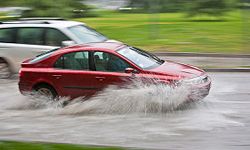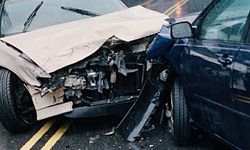"Rain, rain, go away/Come again some other day/Preferably when I don't have to drive over 5 miles of slick asphalt to buy caulking materials to patch the leak in the ceiling that's causing ]water to puddle on my expensive new Persian rug."
No, that old children's nursery rhyme never worked for us either, so we had to do it the hard way -- we had to learn how not to drive in the rain.
Advertisement
That couldn't be so hard, could it? You might be surprised. Some bad driving habits, ones that don't cause trouble when the road is dry, are so deeply ingrained that it's awfully hard to get rid of them when Mother Nature is dumping her liquid love all over the landscape in an attempt to make rosebuds bloom and cause shiny chrome fenders to crumple. But fear not, dear reader. If there's a 100-percent chance of precipitation on your local roads and you absolutely, positively have to be someplace in half an hour, we've compiled a quick list for you of driving habits you should immediately get rid of. So pop some multivitamins to enhance those rusty memory cells of yours and read the next five pages before you open that ratty old umbrella and venture out into the rain-drenched wilderness.
You'll thank us for it you when you get back home with your car -- and your spinal cord -- in one piece.


